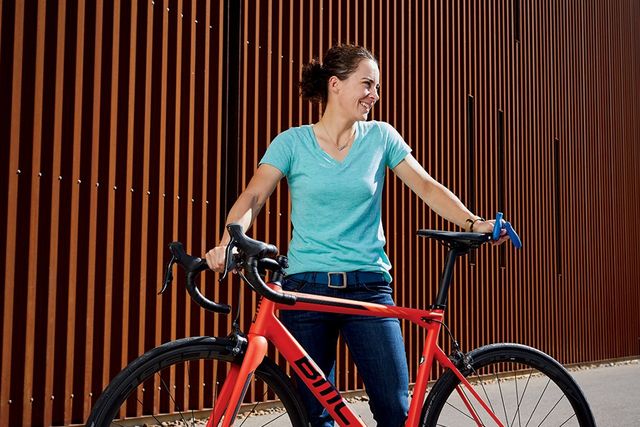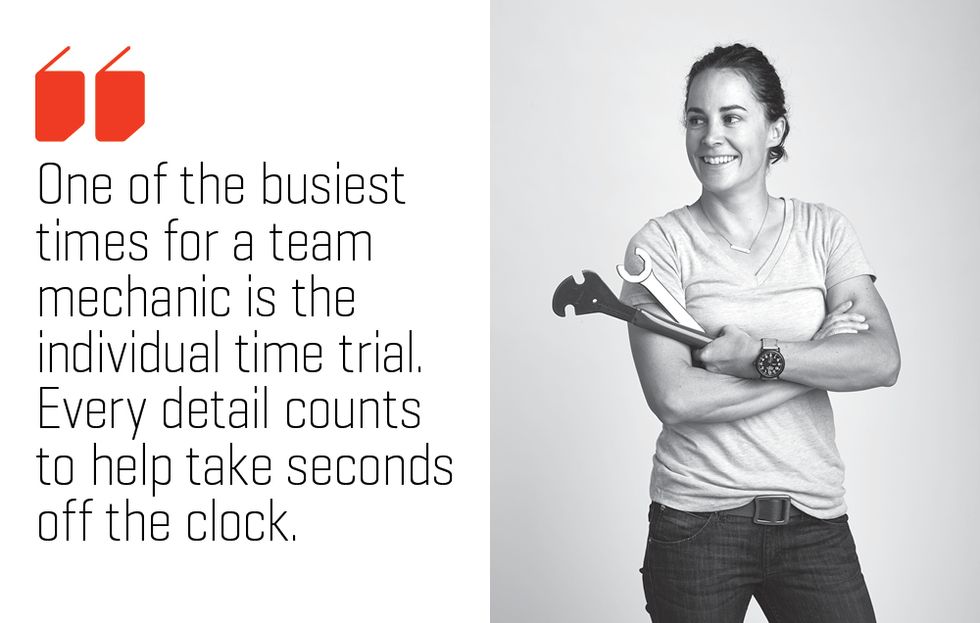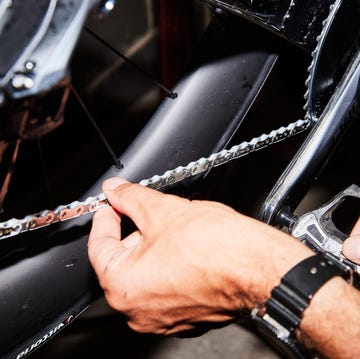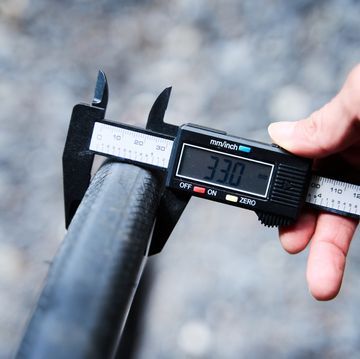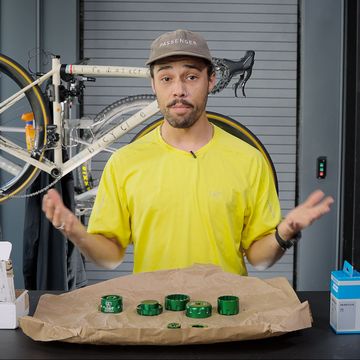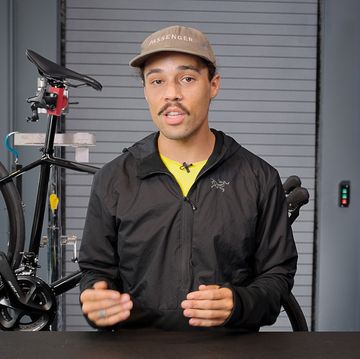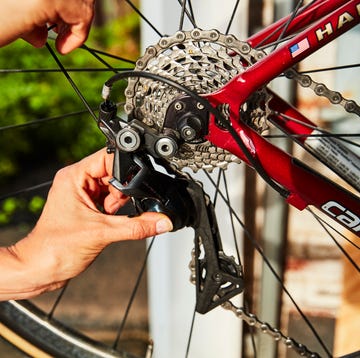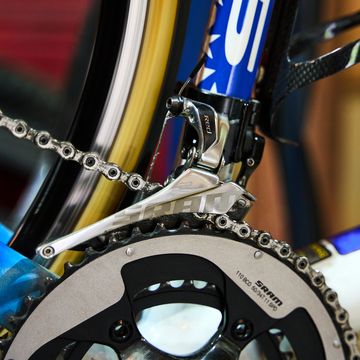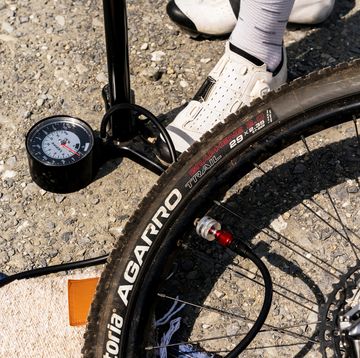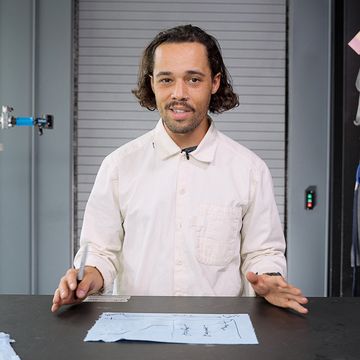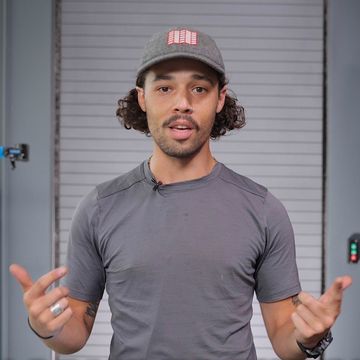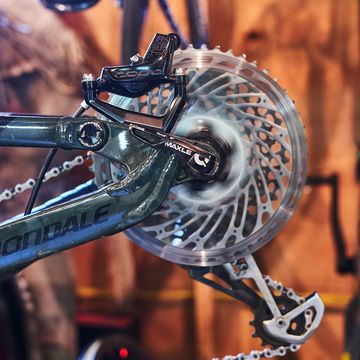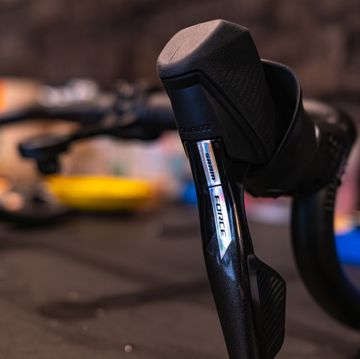Editor's Note: This article first published in the print edition of Bicycling. Subscribe now!
Wrenching for a professional cycling team involves much more than wiping down bikes and keeping chains lubed, says Andrea Smith, mechanic for Team Colavita. Here’s an inside look at one of the coolest jobs in cycling.
RELATED: Why Every Girl Should Learn to Fix a Flat
• I was on the track team at the University of Montana in Missoula, and I started riding trails for cross-training. Immediately I was like, “Wow, this is way more fun than running.”
• When I was 20, my bike was stolen. I didn’t have the money to replace it. I ran into a friend on campus who said, “There’s this fight coming up, and there’s prize money—you should train with me and enter it.” I entered the boxing match and won. The prize was $500, which helped me buy a Gary Fisher Joshua full-suspension mountain bike.
• I thought, I have this nice bike—I need to learn how to take care of it. I wandered into a bike shop and asked if they had any sort of clinic. The mechanic said, “If you bring in a latte Saturday morning I’ll spend a couple of hours with you.”
• We went over basic bike maintenance, like how to break a chain and put it back together again. I felt so empowered. (Get better at wrenching with our online Quick & Easy Bike Maintenance course!)
• After college I worked in the bike shop at an REI in Massachusetts. In 2010, after six years at REI, I got a job at Ride Studio Café, which had just opened in Lexington, Massachusetts. I built up a lot of Seven bikes and custom orders. At the time it was an unusual concept to have a bike shop in a café. People would come in and be kind of confused about what was going on.
• When I was hired by Team Colavita in 2015, I didn’t want there to be any doubt, like “Is she a good mechanic?” or “Oh, I’ve never had a woman work on my bike.” Not that they made me feel that way. I put a lot of pressure on myself.
• On any given day, the role of a team mechanic can be anything. It’s building the bikes, gluing all the tubulars, transporting the equipment to races, doing airport pickups. And making sure the team car has plenty of race-day snacks!
• When a mishap occurs or riders need last-minute changes to their bikes, things can become stressful. How I handle myself can make or break how the rider responds to the situation. I’ve always worked on remaining calm, and I think that’s helped me fix problems more efficiently.
RELATED: The Five Most Common Bike Repairs You Should Know
• Minutes before the start of the 2016 Redlands stage race, I was sitting in the caravan, watching the live coverage. I noticed that one of our riders kept looking down at her bike and teammates were starting to wave over neutral support. I jumped out of the car, pulled the spare bike off the roof and rode it several blocks to the start line. It turned out the battery for the electronic shifting was dead. Luckily, we were able to make a bike change.
• Favorite fixes? I’ve worked on a lot of beach cruiser singlespeed hubs. You pull out the internals and get to look at what’s going on in there. It’s cool to see, “Yeah, the ball bearing is worn out, and I need to replace this piece, and it’s all going to go back together and work how it should.”
• I remember my first time working on a road bike. I’d never been on a road bike! I was like, “Is this how it’s supposed to shift?” Now, after 12 years working on bikes, it’s nice to know, “Okay, this is my profession. I’m confident in my ability.”
